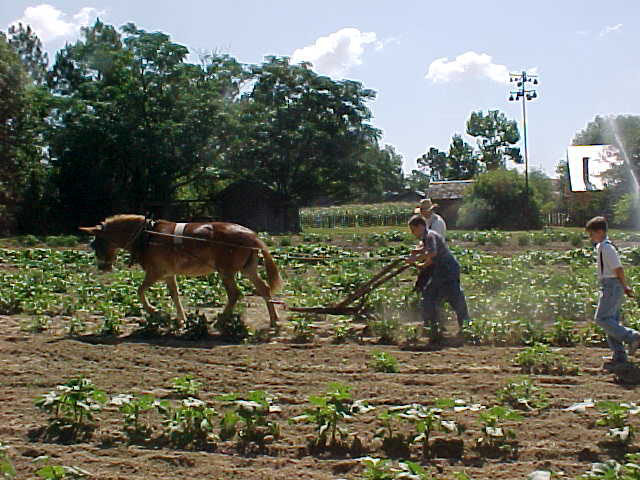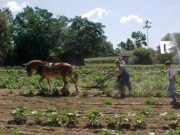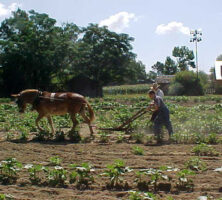The Georgia Museum of Agriculture and Historic Village (formerly the Georgia Agrirama) is the state’s official museum of agriculture. A living history museum located in Tifton, the ninety-five-acre site offers a traditional farm community of the 1870s, a progressive farmstead of the 1890s, an industrial complex, and a rural town, as well as other attractions.
The idea for the museum grew out of a conversation between Ford Spinks, a former state senator, and Rosalie Shepherd, the widow of James L. Shepherd, a research scientist with the Coastal Plain Experiment Station (later University of Georgia Tifton campus). James Shepherd had invented the first mobile peanut combine machine, and no suitable housing could be found for it. Spinks spearheaded efforts to build a museum of Georgia agricultural history, and the Agrirama opened to the public on July 1, 1976.
In 2010 administrative control of the Georgia Agrirama moved from the Georgia Agrirama Development Authority to Abraham Baldwin Agricultural College in Tifton, and the facility was subsequently renamed the Georgia Museum of Agriculture and Historic Village.
The site includes more than thirty-five restored or reconstructed buildings, including the Victorian-style Tift House, a water-powered gristmill, a one-room school, and assorted farmhouses. Staff members in period costume interpret the history of the wiregrass region of south Georgia by recreating the daily activities of the community in the late nineteenth century. Other attractions include the Vulcan Iron Works Steam Locomotive, the Georgia Museum of Agriculture Center, and a full-service conference facility.
The museum caters to both students and tourists. More than 60,000 people visit the museum every year, about half of them schoolchildren. School tours and educational workshops offer a unique interactive opportunity for students to dress in costume and participate in the daily activities of the late 1800s. Each year the museum also hosts special events that emphasize the seasonal activities of the community at the turn of the century.

Courtesy of Georgia Museum of Agriculture and Historic Village





